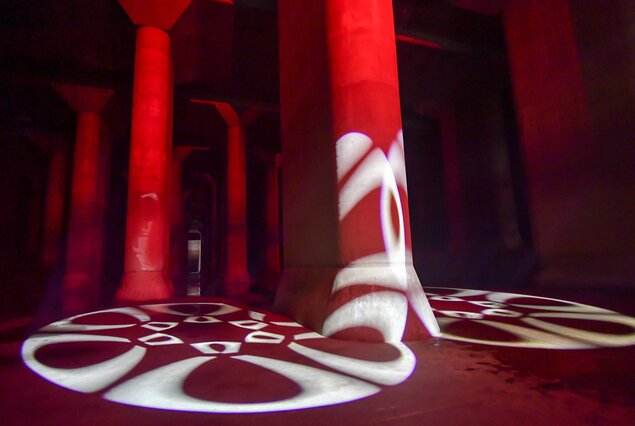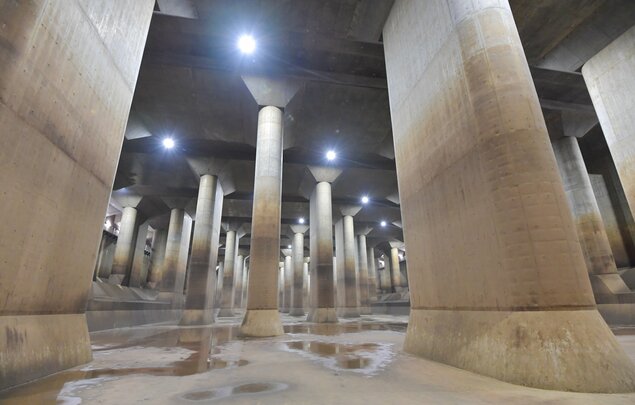TOKYO, Japan Wire – A light and sound show at the Metropolitan Outer Area Underground Discharge Channel, one of the world’s largest subterranean flood control systems, was shown to media on September 26 ahead of new tours of the facility near Tokyo beginning in November.
The new show takes place in the channel’s pressure-adjusting water tank — a cavernous underground space supported by towering pillars often referred to as an “underground shrine.”
The show’s themes highlight the role of the facility, north of Tokyo in Kasukabe, Saitama Prefecture, in helping to prevent flooding of the low-lying Nakagawa-Ayase river basin.

A light and sound show at the Metropolitan Outer Area Underground Discharge Channel is shown to media on Sept. 26, 2025. (Japan Wire)
With some of the tank’s giant pillars as a backdrop — each pillar measuring 18 meters high, 7 meters long, and weighing 500 tons, the show opens with a theme depicting the increasing threat of heavy rains and large-scale flooding, before moving on to the image of floodwater flowing into the tank and later being discharged.
Reservations for new tours of the facility featuring the show are scheduled to begin through a travel agency in early October. The first tours are likely to be held in November.
By taking in overflow from small and midsized rivers and directing it into the larger Edogawa River, the Metropolitan Outer Area Underground Discharge Channel helps to prevent localized flooding and also serves as a safeguard for parts of Tokyo.
The facility attracts around 68,000 visitors through tours each year, with many drawn to the awe-inspiring scale of its underground tank. Visitors descend 116 steps to reach the tank, which is 177 meters long and 78 meters wide.

Photo shows the pressure-adjusting water tank at the Metropolitan Outer Area Underground Discharge Channel on Sept. 26, 2025. (Japan Wire)
Tours featuring the light and sound show are among plans the facility operator announced in March aimed at developing the channel into a world-class tourist attraction and a hub of disaster prevention tourism, attracting 100,000 visitors annually.
Koji Nobutsune, a land ministry official and deputy chief of the facility, said one of the aims is to encourage people to better understand their own role in disaster prevention.
“Facilities like the channel cannot provide 100-percent protection from disasters,” he said. “Through initiatives like the light show we hope to increase opportunities for people to think about disasters and to see prevention as something that concerns them, too.”
This article was submitted by a contributing writer for publication on Japan Wire.
Related coverage:
Subterranean defenses prepare Tokyo for worst-case flood extremes


AloJapan.com